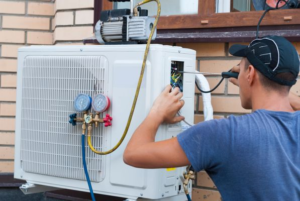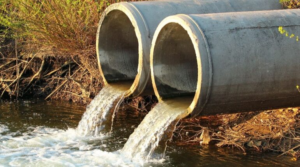Keeping your HVAC system well-maintained will save you money on energy bills, ensure it works at peak efficiency, and maintain good indoor air quality. It will also extend the unit’s life and protect your home from costly repairs.
Dirt, improper lubrication, or worn-out components can increase the system’s strain. Routine maintenance will identify these issues early on, preventing them from becoming major repair problems. Contact Hvac Lexington KY now!

HVAC installation involves several steps. This includes connecting the unit to ductwork and testing and replacing components as needed. It also involves adjusting the system to deliver optimal performance and comfort. During the process, it is crucial to make sure that the equipment is not producing carbon monoxide. This can lead to dangerous health problems and can cause a carbon monoxide detector to go off in the home. This can be avoided by having the service team check the exhaust flue and damper on the new unit.
When choosing a hvac installer, make sure to find one with experience in your type of system. This will help to ensure that the installation is done correctly and efficiently. They should also be able to provide you with an accurate estimate before beginning the work. A reputable company will also offer a warranty on their services.
The first step in an HVAC installation is to shut off the power and gas supply to the area where the system will be installed. This is a safety precaution because the system contains high-voltage parts. It is also important to clean the area before starting the job. This will prevent dust and debris from contaminating the system.
Next, the technician will install the ductwork. This will include the air ducts that carry cool air throughout the house. It will also involve installing the air handler, which is responsible for cooling and heating the air. Once the ductwork is in place, the technician will connect the indoor and outdoor units. They will then test and replace any components, and conduct a final inspection of the work before handing over the unit to the customer.
If you are replacing your existing HVAC system, it is essential to consider the size of your home and how much energy you use. This will influence the size of the unit that you need. It is also a good idea to upgrade your home’s insulation and seal any leaks. This will reduce your heating and cooling costs and increase the efficiency of your system.
Maintenance
HVAC maintenance is like an oil change on a car: It keeps your system running efficiently and reduces the likelihood of expensive breakdowns. It’s a wise investment that pays off in reduced energy bills and improved comfort for you and your family or employees.
Neglected HVAC systems have to work harder and longer for the same results, using more electricity over time. Eventually, the strain will result in major repairs that you could have avoided with routine inspections and preventative maintenance. In many cases, these issues will make themselves known on the hottest or coldest days of the year when your HVAC system is working hardest.
During regular maintenance appointments, an HVAC technician will perform a series of inspections and repairs. This will include cleaning the evaporator and condenser coils, blower motor and condensate drain lines. Then, components like fan motors and compressors will be lubricated to minimize friction, reduce wear and tear and extend equipment life. Then, a tech will check the thermostat to ensure that it’s calibrated properly for accurate temperature control.
Another key part of HVAC maintenance is ensuring that all exposed electrical connections and wiring are safe. A technician will check for signs of loose wires and potential electrical problems, such as arcing and burning. They’ll also verify that the refrigerant levels are correct (not too low or too high) for proper system performance. Finally, a HVAC technician will look for potential safety concerns like carbon monoxide leaks or a pilot light that’s off on a furnace.
A well-maintained HVAC system is a selling point in homes, and it may boost the home value by up to 7%, according to Angi. Plus, it’s much easier to get your homeowners insurance to cover a system repair or replacement if you have proof that the HVAC was maintained regularly. Most manufacturers want to see documentation of regular maintenance on newer equipment, so failure to do so can void the warranty. That means you’ll have to pay for a system that should be covered by the original equipment warranty. The best way to avoid this is by scheduling and keeping up with your planned maintenance.
Replacement
For many homeowners, their HVAC equipment hardly ever comes into focus until it breaks down, leaving them sweating buckets in the summer and shivering in the winter. Then, they have to decide whether or not to invest in expensive repair work or buy a new unit altogether.
One of the biggest considerations here is age. If your system is nearing the end of its expected service life, replacing it will probably save you money in the long run. Often, there are other clues that it’s time, too. A repair bill that runs over $5,000 is a good indicator that it might be time to start shopping around for a new HVAC system.
Once you’ve decided that it’s time to upgrade your heating and cooling equipment, the first step is to find a qualified professional to provide an estimate. Be sure to ask for the contractor’s license number and insurance information so you can follow up on their credentials.
An expert will perform a thorough assessment of your home to determine what type and size of equipment you need. This will involve assessing the square footage of your home, performing load calculations, and checking for any existing insulation or ductwork problems that can affect energy efficiency.
A licensed professional will then provide you with a comprehensive estimate that includes a cost breakdown for the replacement equipment, installation and any other recommended work to help your home function more efficiently, such as duct cleaning, insulation upgrades and sealing of windows and doors. They’ll also remove the old unit and clean up the project area at no extra charge.
When it comes to financing your HVAC replacement, there are a variety of options available. For example, if you’ve built up enough equity in your home by paying down your mortgage, a home equity loan might be an option to consider. This type of loan typically has low but variable interest rates and may be tax-deductible, depending on your situation.
Another popular choice for financing your replacement is a home equity line of credit, which works similarly to a traditional mortgage but gives you a revolving line of credit that you can borrow from again and again. These loans usually have lower interest rates than other types of home loans, but they do come with some drawbacks, including the possibility that your house value could go down over time.
Repairs
When HVAC equipment breaks down, it must be repaired. A technician will inspect the unit and determine the source of the problem. Often, this involves looking at the electrical components, refrigerant levels and air flow. In some cases, a new thermostat may be required to provide more accurate temperature control. The duct system will also be examined for leaks and dirty ductwork, which reduces efficiency.
Most HVAC repair technicians are licensed, insured and offer competitive pricing. Some are also certified by trade associations or have completed an apprenticeship program. You can find an HVAC contractor by searching online or asking friends for recommendations. Look for a company that offers service plans, as these can provide priority booking and discounts on repairs.
Getting HVAC work done before it becomes an emergency can help keep your family or business comfortable and reduce costs. Invest in a quality system and follow maintenance schedules to maximize its lifespan and energy efficiency.
HVAC systems are an essential part of residential structures, such as single-family homes and apartments; large commercial buildings, such as office towers and malls; and industrial and marine applications, including aircraft, cars and ships. HVAC systems maintain comfortable temperatures and airflow, and protect occupants from illness and discomfort.
The average HVAC system lasts 15 to 25 years, depending on the type of system, brand and consistency of maintenance. Eventually, however, the system will wear out and need to be replaced. A good time to replace a worn-out system is when it starts making strange noises or displaying other signs of trouble, such as higher energy bills than usual.
An HVAC replacement can improve a building’s energy efficiency and comply with updated building codes. It can also increase the property value of real estate and enhance customer comfort in retail spaces. A retrofit can be a cost-effective alternative to replacing an entire system.
Leaky ducts, dirty filters, low refrigerant and other issues can cause HVAC equipment to run harder than it should. Regular maintenance can prevent these problems from occurring, as well as reduce energy costs and improve indoor air quality.


